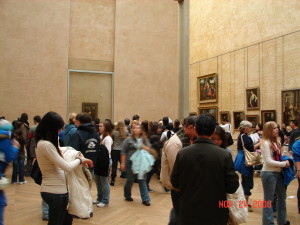My opinion on the book Letting Go? Sharing Historical Authority in a User-Generated World is that it provided me with a strong comprehension of how history is viewed in both the minds of the public, as well as understanding the evidence provided by the experts in the field of history. One such example of public opinion on history that I learned would be Web 2.0, during my study, has modified the internet from its original state, allowing users of the internet access to new websites to combine their own ideas with that of professionals in various academic fields. For the benefit of historians, websites have become both tools for historians’ purpose and, conversely, competition for museums and historical groups. In an available wide variety of sources, websites detail information that can be studied on various web pages, linking the information to multiple sources including historic sites and figures, but I also realize that it leaves no reason for museums to be visited if the information has already been placed on all these websites. Letting Go describes the internet more user-controlled since Web 2.0, since people can now purchase merchandise online, alter content in the form of photographs or articles, and even socialize through websites like Facebook and Twitter through the internet, something that museums can only offer an exhibition via their websites, but offer no real change from users. Besides the Internet, I have learned there are many other ways that professors, curators, and historians of all kind have found other means to introduce guests to a hands-on approach to history, such as the PhilaPlace project that has taken place in Pennsylvania, or even the Human Libraries that are setting up shop around the world. The PhilaPlace project was set up by Pennsylvania as a means to introduce oral historians to the public, and carefully explain the history of the state from the point of view of average individuals. The Human Libraries serve as a substitute for regular libraries, the difference being you talk to people, learning history from someone who experienced the past, not just having read about it in a book or other source.
Museums, on the other hand, provide a visual display and people have the ability to walk-around exhibits which educate the public, and offer a general insight into the past of the artifacts or documents on display, which I personally prefer. Other than the artifacts, people like me can learn valuable information from the tour guides or staff who work at the museums about the different exhibits, and why the items on display are of such cultural and historic value, but despite its many offerings, museums and other forms of institution all have a major flaw – they are not controlled by the public, and instead are controlled by a select group that allows access to the exhibits through monetary fees, or other forms of payment. Museums are sometimes seen as establishments that visitors may not have an influence upon, and therefore, it does not affect them in general. Since they have not participated in the acquisition of the exhibits, and the artifacts on display, there is no connection to their lives. Even so, museums are described today as models of providing the public with information about certain subjects in the fields of art, history, and science. The use of participatory techniques, such as obtaining visitors’ opinions and ideas can help to draw visitors back in to museums.
Despite the differences, I see there are similarities in models of experts and visitors who both study the historical or scientific value of the artifacts and documents that are part of historical culture and without the other, they are both one half of a puzzle, and in my opinion, neither could coexist without the other.
